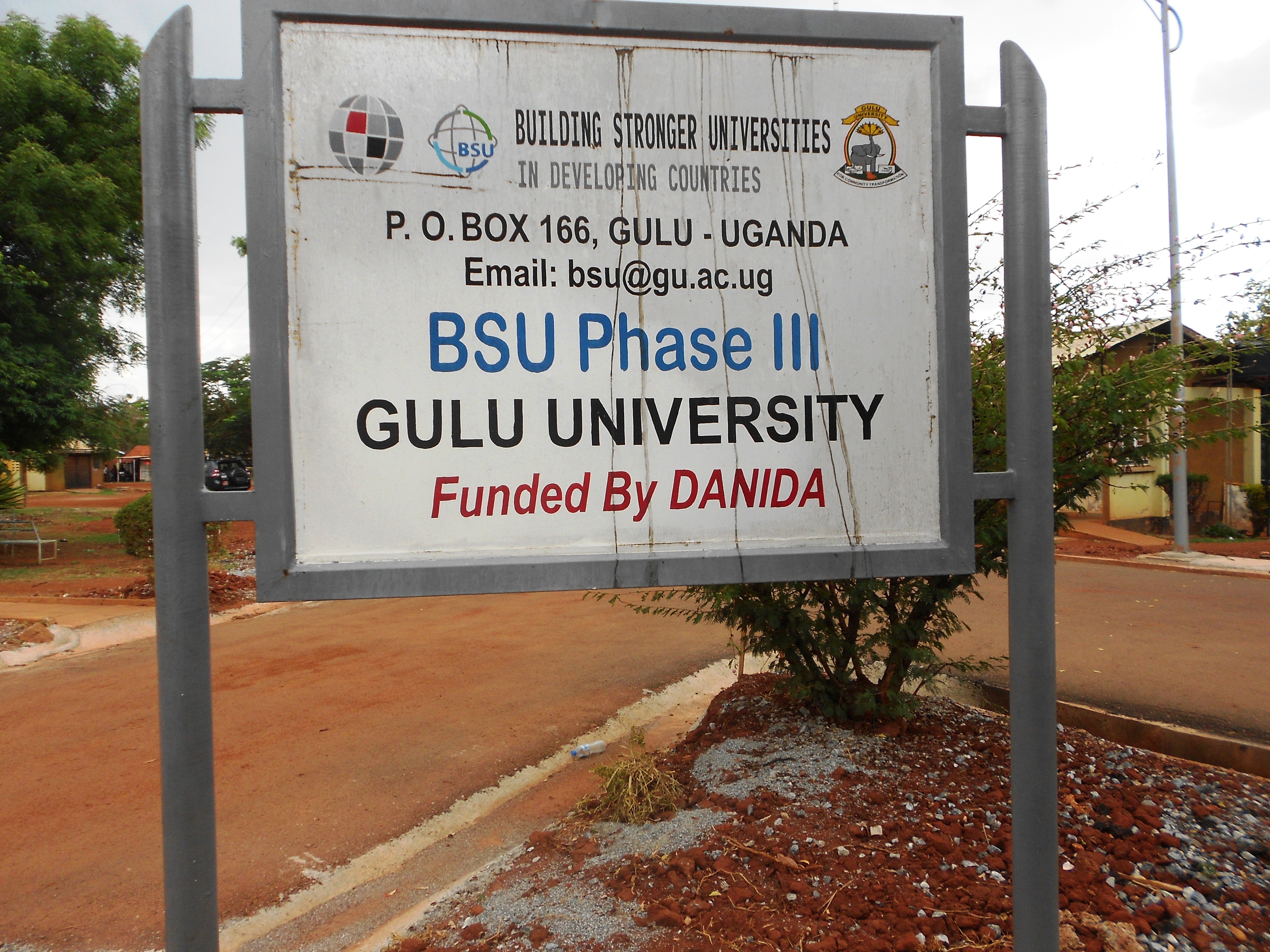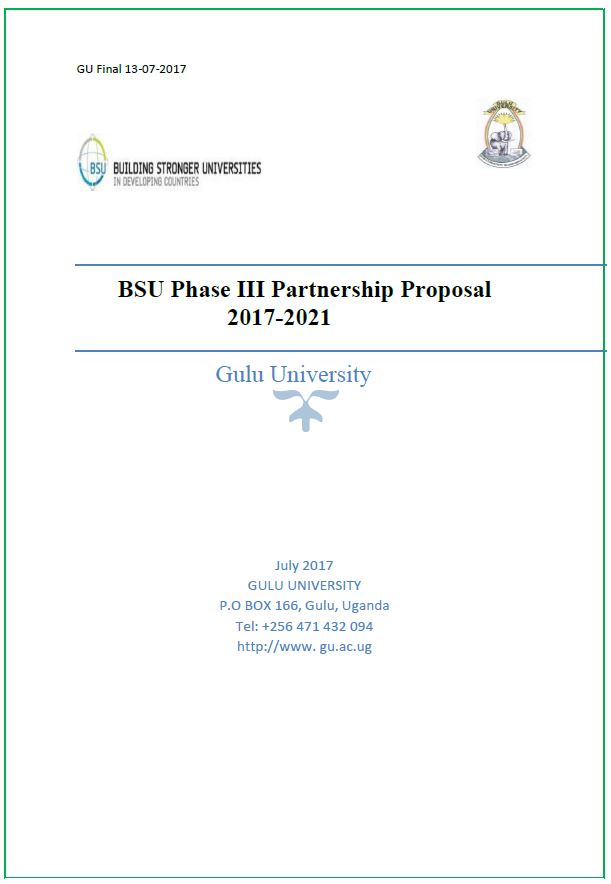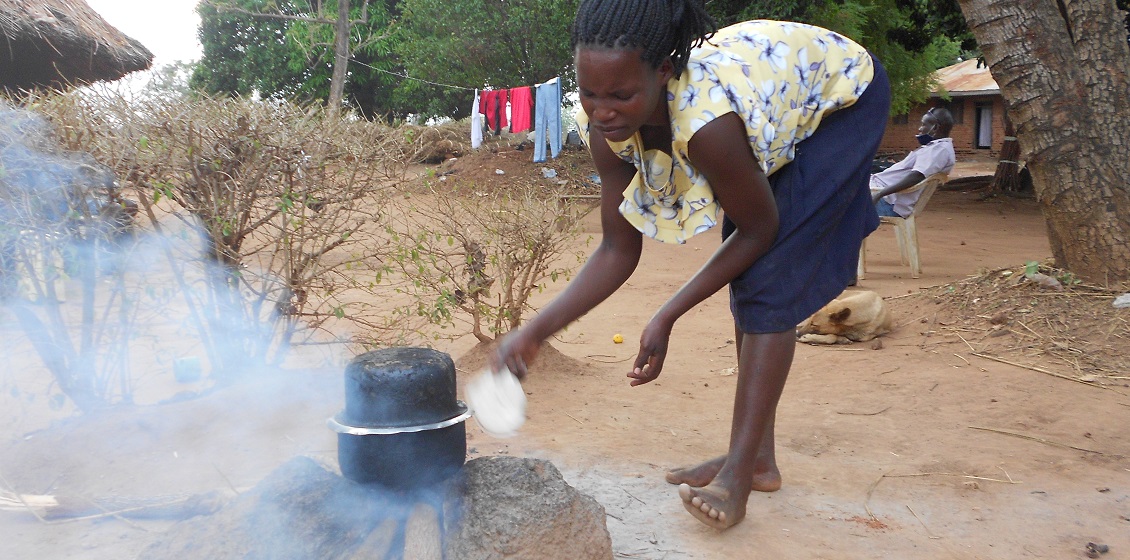On a quiet Friday evening in March, Miriam Ajak, 23, stoops over the traditional three-stone stove in front of her hut in Lawiyeadul village, Laliya Parish, on the outskirts of Gulu City in northern Uganda, to prepare dinner for her extended family.
As she pushes in the firewood, smoke slowly rises above the sooty stones and pans to shroud her entire body. Some of it enters her eyes. She grimaces in pain, picks up a makeshift fun and flaps it up and down to add more pressure to the fire. But the wood can hardly burn because it is highly moist. The more smoke it spews, the more she breathers into her lungs.
“Firewood is very scarce, and charcoal is very expensive,” she tells me. “But I have to cook because we must eat.”
Plant biomass is her only sources of energy for cooking. Access to electricity is a very distant dream for Ajak. Not a single electric cable or pole is in sight from her homestead. But she is only one of the millions of Ugandans going through the same plight.
The energy poverty
Only 42.7 percent of Uganda’s population has access to electricity. Although this figure represents an impressive increase of 24.2 percent from 2015, rarely in Uganda is electricity used for cooking by those who have access to it. The cost is high that even middle class households limit its use to basics such as lighting, pressing, charging telephone, TV and radio sets, and refrigeration at most. At USD 0.186 per kWh, Uganda’s household electricity price is way above the global average of USD 0.137 per kWh. As thus, only 4 percent of Uganda’s households use gas, kerosene or electricity for cooking. The rest of the households rely on biomass energy, with firewood the most popular (78%), followed by charcoal (18%). But wood is increasingly getting scarce.
Gender and the kitchen
All able-bodied female members of Ajak’s family have to, in a group, frequently walk to Akony village, about three kilometres from Lawiyeadul, in search of firewood. By 2007, the average distance people in Uganda travelled to access firewood had increased from 0.73 kilometers in 2000 to more than 1 km (State of Uganda’s Forestry Report, 2016). For Gulu and other districts in northern Uganda including Kitgum, Nebi, Amuru and Adjumani, households travel more than four kilometres for firewood, on average.
It is a long held tradition among Uganda’s 56 tribes that women have to manage the cooking, so they bear the burden of getting cooked food onto the table. But the issues at hand go beyond gender, energy and food. They transcend into other major global concerns – as reflected in the Sustainable Development Goals (SDGs) – including public health and Climate Change:
Nearly 4 million people in the world die each year from household pollution associated illnesses such as pneumonia, stroke, ischaemic heart disease, chronic obstructive pulmonary disease (COPD) and lung cancer, according to the World Health Organisation (WHO). The risks are higher among women and children because at home they come closest to wood, charcoal or other highly toxic fuels; the huge demand for firewood and charcoal, in addition to cutting trees for timber and clearing of land for agriculture, has fuelled rapid deforestation, in effect contributing to Climate Change. In Uganda, forest cover dropped to nine percent in 2015 from 24 percent in 1990, according to the National Forestry Authority (NFA). This has increasingly called for local interventions in challenges of national and global dimensions.
The Green Charcoal project
A few kilometres from Ajak’s village is Gulu University. A team of researchers there is studying agricultural waste for two key outputs: One, to provide cleaner energy for cooking and two, to reverse environmental degradation from deforestation. These should come with an additional but equally important benefit of providing jobs especially for the youth.
The Green Charcoal project, as it is called, is basically about making briquettes. The arguments are: Briquettes produce much less smoke than charcoal and firewood and therefore, they are healthier; when people turn to briquettes, there will be less cutting of trees for firewood and charcoal, thus reducing deforestation.
The project, funded by the Danish International Development Agency (DANIDA) under the Building Stronger Universities project, started in September 2019. The Covid-19 pandemic, however, interrupted the team’s progress. In March 2020, universities were closed as part of the general lockdown in Uganda to control the spread of the pandemic. The project only resumed in January 2021.
The team is currently fabricating and testing machines to carbonise agricultural waste for biochar, grind the biochar into small particles, mix it with a binding agent (at the moment cassava starch), and then extrude it into briquettes.
Making briquettes is not new in Uganda, although their use is still very low. The approach the team is taking, however, is to localise the entire process right from fabricating the machines to the production and consumption of the briquettes. This has opened up interdisciplinary research paths around briquettes.
“Traditionally we have been importing [briquette] technologies but we are trying to develop the technology locally,” says Dr. Collins Okello, Dean, Faculty of Agriculture and Environment, Gulu University. Okello is the team leader of the project. “The idea is to make a model which can be replicated across Uganda and even other regions within Africa which have similar situations like ours.”
Okello is an agricultural engineer, Benedict Ebangu is an electrical engineer, Fredrick Amanyire is a renewable energy expert and Peter Okot Mwa is a mechanical engineer. The four are at the centre of the study. They are joined by researchers from the Faculty of Education and Humanities, and the Faculty of Business and Development Studies, especially for the community participatory research aspect.
“We want it [this research] to be participatory. We develop a product, send it to the community, the community uses it and gives us feedback. Where necessary we adjust the design of the machine, improve the product and send it to them again for feedback. On the basis of that feedback we refine our technologies and at the end of it all we have a technology which is highly accepted by the community because they have participated in its development. We are going to have a lot of research activities at the university around the green charcoal value chain,” Okello says.
Experiments will be done on different types of agricultural waste to establish the quality of briquettes from them, the pros and cons of using the different types of waste, the kind of cook stoves to be used, binding materials, consumer preferences, sociocultural factors and several other aspects.
Three locations in northern Uganda have been selected for the pilot project: Gulu City (where the university is based), Pabo trading centre (along the road from Gulu to South Sudan), and Prongo trading centre (along Gulu-Arua Road). These were primarily chosen because through agro processing, they generate a lot of agricultural waste including rice and peanut husks. Another factor for selecting Prongo was because of its proximity to a refugee hosting area, Adjumani district.
By the end of March 2021, Uganda was home to nearly 1.5 million refugees, 61.4 percent of whom were from South Sudan. In Adjumani, nearly half of the district’s population (48%) comprises refugees.
“There is very big pressure [on trees], taking into account the increasing population locally but also the increase in energy demand ignited by the influx of refugees in the country,” Okello says.
The challenges
While briquettes are lauded as a clean and sustainable source of energy – and have been adopted by the Uganda Industrial Research Institute (UIRI), a government parastatal charged with research and development or acquisition of appropriate technologies for the country’s industrial sector – you need energy to run the machines that make them, and sustainable energy at that.
Most of Uganda’s electricity is hyrdo so it is renewable, but northern Uganda has some of the worst power interruptions in the country. In 2019, the Speaker of Parliament, Rebecca Kadaga, described the situation as a “scandal.” Okello and team have to contend with the same situation today.
“Our biggest challenge is power interruption. A lot of the time power is off,” Okello says. “It is the same challenge I see when we install these machines at the different centres. The companies which are going to be using them will certainly have power interruptions. And we strategically do not want to use diesel because it is not renewable.”
But Okello is hopeful that there soon will be improvements in the power supply. “I think there is hope. There is a big electricity infrastructure plan for the region so I believe in the near future that will not be problem.”
Uganda’s demand for biomass energy will not reduce any time soon. Research projects to make it cleaner and more sustainable are a logical intervention. The financial sustainability of such projects, however, is always a key concern for the project implementers.
William Odinga Balikuddembe is a science journalist based in Kampala, Uganda
SUPPORT DDRN SCIENCE JOURNALISM. DONATE DKK 20 OR MORE (APPLICABLE IN DENMARK ONLY)
(APPLICABLE IN DENMARK ONLY)

![]()
![]()






